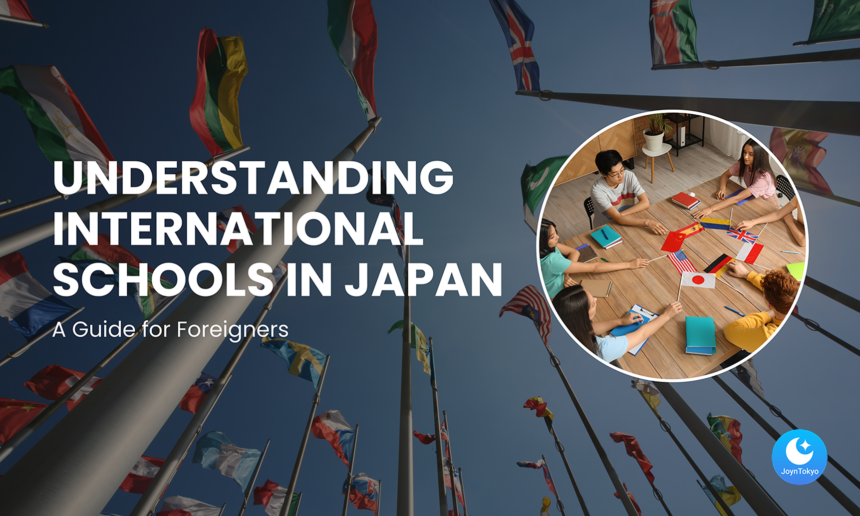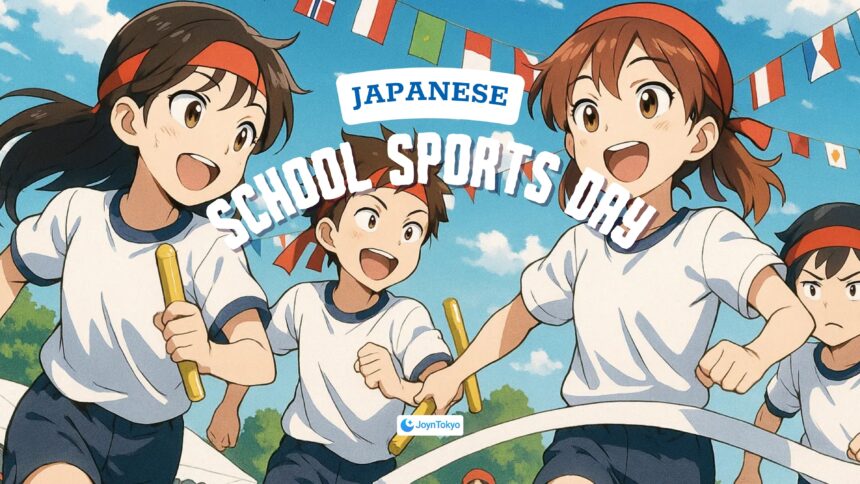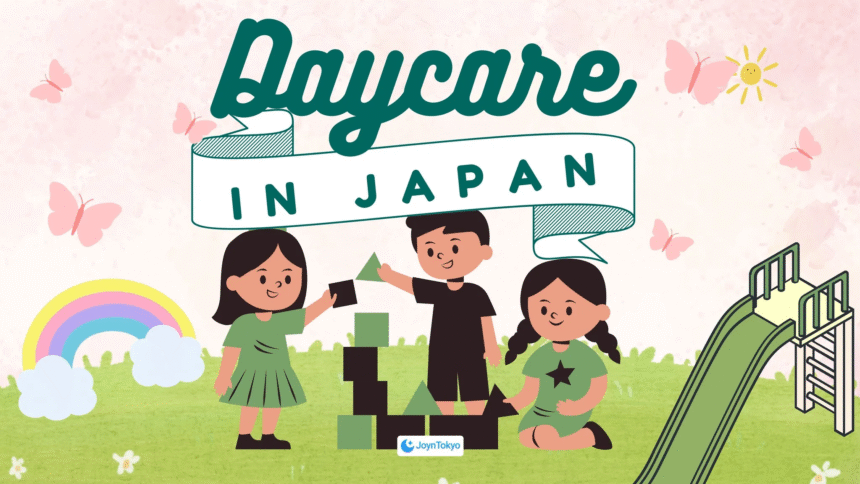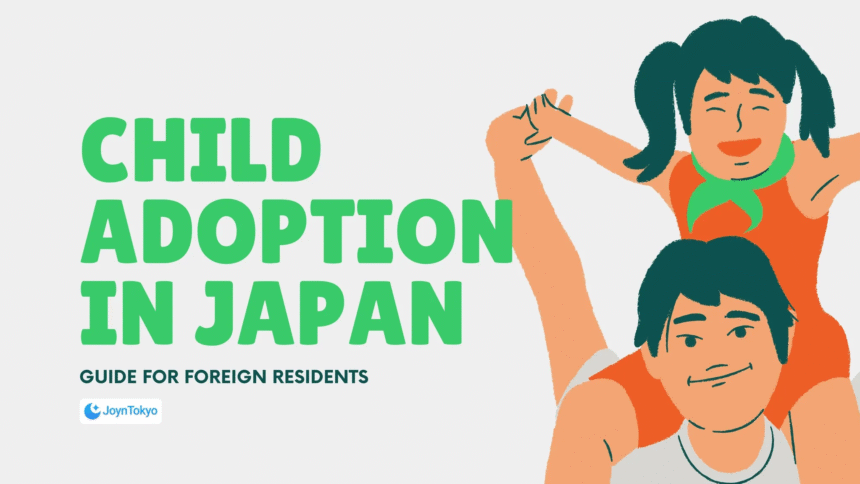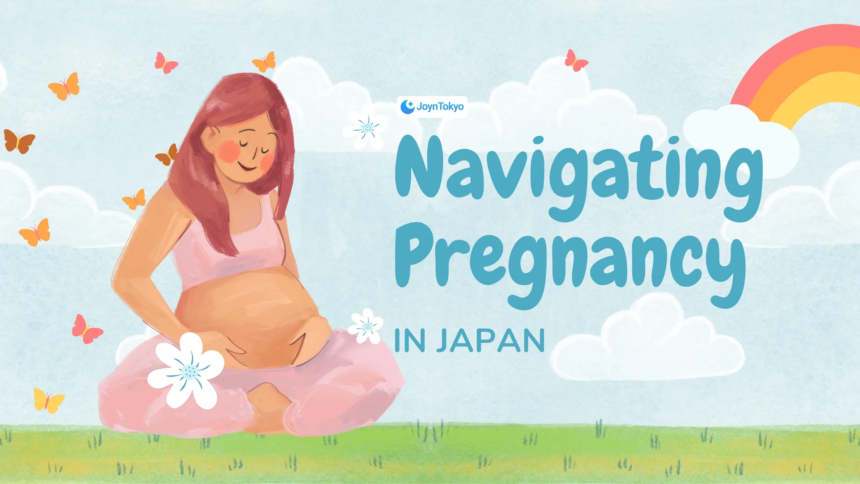International schools in Japan offer an alternative path for children who need a globally recognized education. For foreign residents, returnee families, or Japanese households seeking bilingual opportunities, these schools provide diverse curricula and communities that differ from mainstream Japanese education. Knowing the types of schools available, their locations, admission procedures, and costs will help you make the right decision for your child’s future.
Understanding International Schools in Japan
International schools in Japan cater primarily to expatriate families, returnee students (kikokushijo/帰国子女), and Japanese families seeking an international education. They offer curricula from various countries, such as the United States, the United Kingdom, or the International Baccalaureate (IB), offering an alternative to the Japanese education system. They also emphasize bilingual or multilingual education, diverse cultural perspectives, and globally recognized qualifications that can help students transition smoothly to universities worldwide.
Types of International Schools

American and British Schools
These schools follow their home country’s system, offering Advanced Placement (AP) courses in the American model and IGCSE or A-Levels in the British model. Well-known names like the American School in Japan (ASIJ) and the British School in Tokyo (BST) provide extensive extracurricular programs, strong alumni networks, and facilities on par with leading private schools abroad.
International Baccalaureate (IB) Schools
The IB program is widely respected and prepares students for university with a focus on critical thinking and community engagement. Schools such as Tokyo International School (TIS) and K. International School Tokyo (KIST) offer the full range of IB programs, from the Primary Years Programme to the Diploma Programme. The IB Diploma is particularly valuable for families planning international university applications.
European and Other National Schools
Communities with strong cultural ties often build their own schools, such as the Lycée Français International de Tokyo and the Deutsche Schule Tokyo Yokohama. These institutions allow children to stay connected to their native language and culture, while still offering an international perspective. Indian, Korean, and other community-based schools also fall into this category.
Japanese International Schools
Different from standard Japanese public schools, these schools are often designed for returnee students (帰国子女 / kikokushijo). They balance Japanese academic traditions with bilingual learning. Schools like the Global Indian International School (GIIS) and Laurus International School of Science combine Japanese educational values with STEM-focused or technology-driven curricula.
Locations of Major International Schools
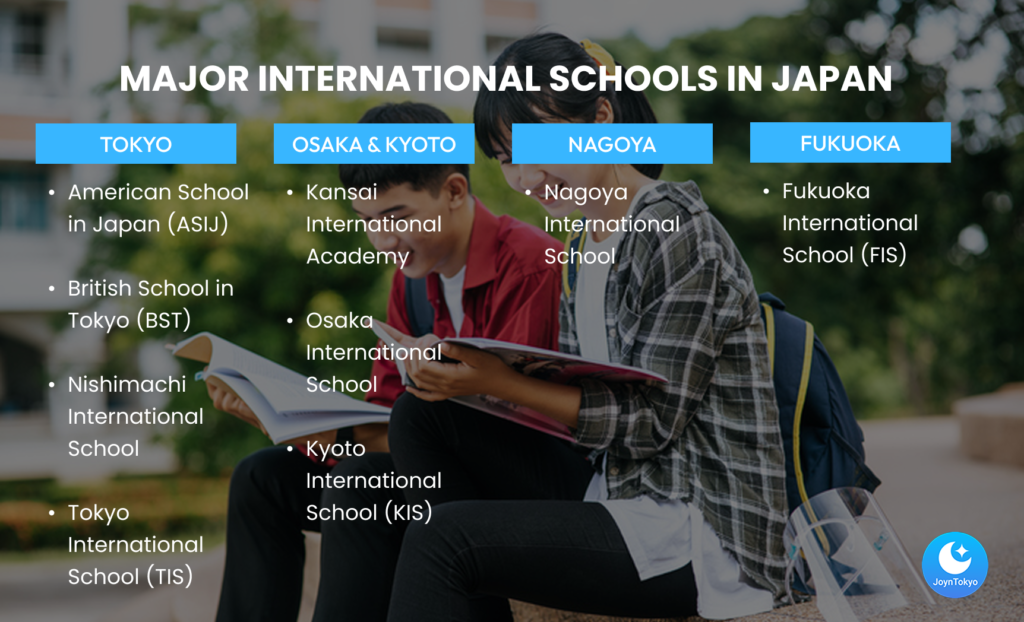
Japan’s international schools are concentrated in larger cities, although most regions now have at least one accredited institution. Membership in organizations like the Japan Council of International Schools (JCIS) is a useful way to confirm the credibility and quality of a school.
Tokyo has the highest number of international schools, particularly in areas such as Minato, Shibuya, and Chofu. Families can choose from well-regarded institutions including the American School in Japan (ASIJ), the British School in Tokyo (BST), Nishimachi International School, and Tokyo International School (TIS).
The Kansai region, especially Osaka and Kyoto, is also home to several strong options. Schools like Kansai International Academy, Osaka International School, and Kyoto International School (KIS) cater to a mix of expatriate and local families who value international education.
Nagoya, known for its role as an industrial and economic hub, offers education at Nagoya International School, which attracts both corporate families and long-term residents. In southern Japan, Fukuoka International School (FIS) provides opportunities for children in Kyushu, reflecting the city’s growing international community.
Admission Process and Academic Calendar
International schools in Japan usually follow either a Western academic calendar that begins in August or September, or the Japanese academic calendar that starts in April. A number of schools also allow rolling admissions when space is available, making mid-year entry possible for relocating families.
The application process typically involves several steps. Families are expected to prepare documents such as proof of residency, past academic transcripts, recommendation letters, and sometimes a personal statement. Many schools require assessments, which can include entrance exams or language proficiency tests, particularly if the school has a rigorous curriculum. Because demand is high, waiting lists are common, so submitting applications early can be an important advantage.
Application Procedure
The admissions process for international schools in Japan is structured but varies slightly depending on the institution. Families should expect to prepare several documents, such as proof of residency, academic transcripts, recommendation letters, and occasionally a personal statement. These materials give schools a sense of the student’s academic history and readiness for their programs.
In addition to paperwork, many schools conduct entrance exams or language proficiency tests. These assessments are particularly common at institutions with demanding curricula, such as International Baccalaureate or A-Level programs, where strong English or subject-specific skills are essential.
High-demand schools also operate on a waitlist system. Places are often limited, and competition can be strong in major cities like Tokyo and Osaka. Submitting applications early, ideally a year before the intended start date, can significantly improve the chances of securing enrollment.
Tuition Fees and Financial Considerations
Tuition at international schools in Japan is one of the most significant expenses for families. Annual fees generally range between ¥1.5 million and ¥3 million, depending on the school and grade level. Beyond tuition, there are additional costs to consider, such as one-time enrolment fees, uniforms, extracurricular activities, and transportation services.
Some schools provide scholarships or financial aid, though these programs are limited and often competitive. For expatriate families, many employers include education support as part of relocation packages, helping to offset the financial burden. Families planning long-term stays should review these details carefully, as annual costs can add up quickly over multiple years.
Choosing International Schools in Japan
One of the most important elements is curriculum and accreditation. A program recognized by the Council of International Schools (CIS), the Western Association of Schools and Colleges (WASC), or JCIS ensures credibility and a smoother transition into global higher education systems.
Extracurricular activities also play a vital role in shaping a student’s development. Clubs, sports teams, performing arts, and leadership programs offer experiences that extend learning beyond the classroom.
Equally important is the school community and culture. Diversity among students and faculty, along with strong support services such as counseling and mentorship, can influence a child’s sense of belonging and well-being.
Logistics matter too. Location and transportation should be carefully evaluated, as daily commutes can affect both students and parents. Many schools provide bus services, but the convenience of the route is key.
Parental involvement can enrich the experience as well. Parent-teacher associations and regular school events build a collaborative environment between families and educators.
Finally, class size and teacher-to-student ratio determine how much personal attention each child receives. Smaller classes often allow for tailored support, while strong alumni networks and proven university placement records indicate long-term benefits. Families should look closely at where graduates typically continue their studies, as this can provide reassurance about the school’s academic track record.
Final Thoughts on International Schools in Japan
International schools provide a valuable educational experience for both foreign families and globally minded Japanese households. Understanding the different schooling styles, their locations, application procedures, and key selection factors—alongside official resources like JCIS—will help you can make a well-informed decision. Open house events, trial classes, and discussions with current families can also help you to know which institution best matches your child’s academic and personal growth needs. We wish the best of luck to you and your family!

